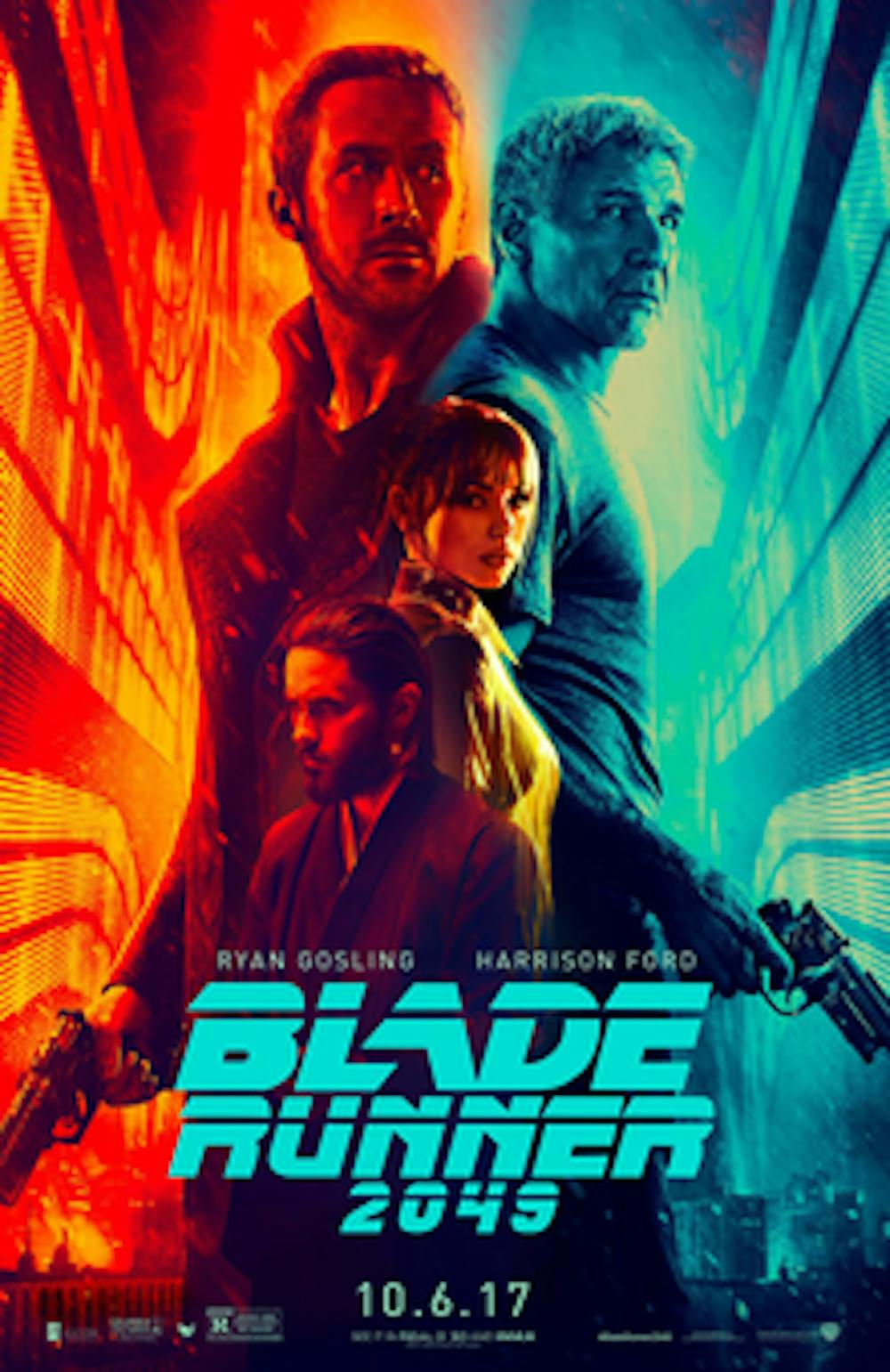In 1968, Philip K. Dick asked us to ponder a question: do androids dream of electric sheep? His novel about what makes the human experience so human inspired director Ridley Scott to bring his vision to the big screen with “Blade Runner” (1982). It subsequently took Scott five attempts to tell Rick Deckard’s (Harrison Ford) story, culminating in “Blade Runner: Final Cut” (2007). The series is a case study in the revisionary practices of art, a constant attempt to improve. Since its release, “Blade Runner” has shifted the science fiction landscape of filmmaking, leaving filmmakers like “Ex Machina” (2015) director Alex Garland and “Arrival” (2016) director Denis Villeneuve indebted to the vision Scott brought to life. So it is without surprise that we find Villeneuve at the helm of a continuation of Scott’s world with “Blade Runner 2049” (2017), an equally challenging and intriguing puzzle-box of science fiction.
Set 30 years after the conclusion of the events of “Blade Runner”, the film begins in a car with K (Ryan Gosling). Like Deckard before him, he is tasked with hunting down replicants, the bio-engineered disposable workforce of this future, who have gone astray. K himself is of a new generation of replicants, created by Niander Wallace (Jared Leto), made without the rebellious impulses of the originals. In a desolate landscape of dust and satellites, K tracks down Sapper Morton (Dave Bautista), a rogue replicant who has settled into a life of farming. Tender is not a word that usually describes Bautista, but that is exactly what he is here. K has come to kill Sapper, a fact both men are well aware of. Yet the tension only builds as the two talk of garlic, and the protein Sapper makes before K “retires” him.
“Blade Runner” made us question the essence of humanity through the mystery of whether or not Deckard was a replicant. There is no mystery here. We know both K and Sapper are replicants, but Bautista makes Sapper effortlessly human, while Gosling keeps K the bland, company man he was trained to be. Sapper fought against this completely obedient design, and to him it must seem that K has given in too easily to the demands of his boss, Lieutenant Joshi (Robin Wright). By beginning the film with this pair, Villeneuve presents the questions we will be challenged to ponder through its almost three hour runtime: what, if anything, makes a replicant less than human, and more unsettling, what makes us human anyways? A discovery that K makes in Sapper’s house sends him on an odyssey that forces him to consider these very questions.
In order to convey such a heady concept, the world must be believable. We must feel every particle of radioactive dust, each snowflake as it melts on skin, and every ember as the cities smolder. Villeneuve enlists legendary cinematographer Roger Deakins to capture his expertly designed world, and Deakins, who has crafted worlds for everything from “Shawshank Redemption” (1994) to “Skyfall” (2012), excels. This may be his finest work. After K lands in bombed out Las Vegas to find Deckard, he walks through air saturated with red dust. Half-seen statues loom around him. He and another replicant do battle on what seems to be the edge of the world, and in a haunting moment, Deckard comes face to face with a ghost from his past. Deakins makes this whole world feel real.
Together, Villeneuve and Deakins have crafted a world like nothing I have ever seen. Frame by frame, they fashion a world of out of images as poetic as anything that has been put to page. They and the production team rely sparingly on CGI, opting to build massive sets instead, matching each with its own particular palette: the streets of L.A. are shown in greys and blues, Deckard’s Las Vegas is coated in reds and oranges, and the headquarters of replicant manufacturer Niander Wallace are an endlessly unsettling scheme of mustard and black. It would be challenging to find a still from this film that is not worthy of framing.
I have intentionally not lingered on the performances in this film because it strikes me that what the actors do seems rather subsidiary to how they look while doing it. Gosling is fine in the role of K. The performance is bland, seemingly intentional in its detachment. Gosling is clearly the protagonist of the film, but it is the supporting cast that stand out. Bautista is superb, and Sylvia Hoeks as Luv, Wallace’s hand-crafted second-in-command, is a scene-stealer. She manifests the internal battle between wanting to make her creator proud, and hating the control he exercises over her and the other replicants. Wright turns the possibly one-note character of a police lieutenant into a deliciously pulpy genre transplant: she seems to have walked out of a 1950’s film noir and into this new world. It is a treat to see Ford return as Deckard, and he is given more to do here than in his last turn as Han Solo in The Force Awakens (2015).
I don’t think Dick, Scott, or Villeneuve have the answer to the questions they pose, which I am grateful for. The attempt to comprehend what makes us tick has inspired gifted artists to grapple with the question on the page, on the canvas, and on the screen. “Blade Runner 2049” exposes us to the dystopian landscape so completely that we are forced to consider what it would mean to be person within it. The idea of replicants and the repercussions of such advancements were terrifying in the original “Blade Runner” and it remains so 35 years later in “Blade Runner 2049”. But that is the joy of it. Villeneuve has no intention of answering Dick’s question, or shutting the door on the world Scott introduced us to. He has instead lent his vision to the oeuvre of humanistic exploration, and we are better for it.




